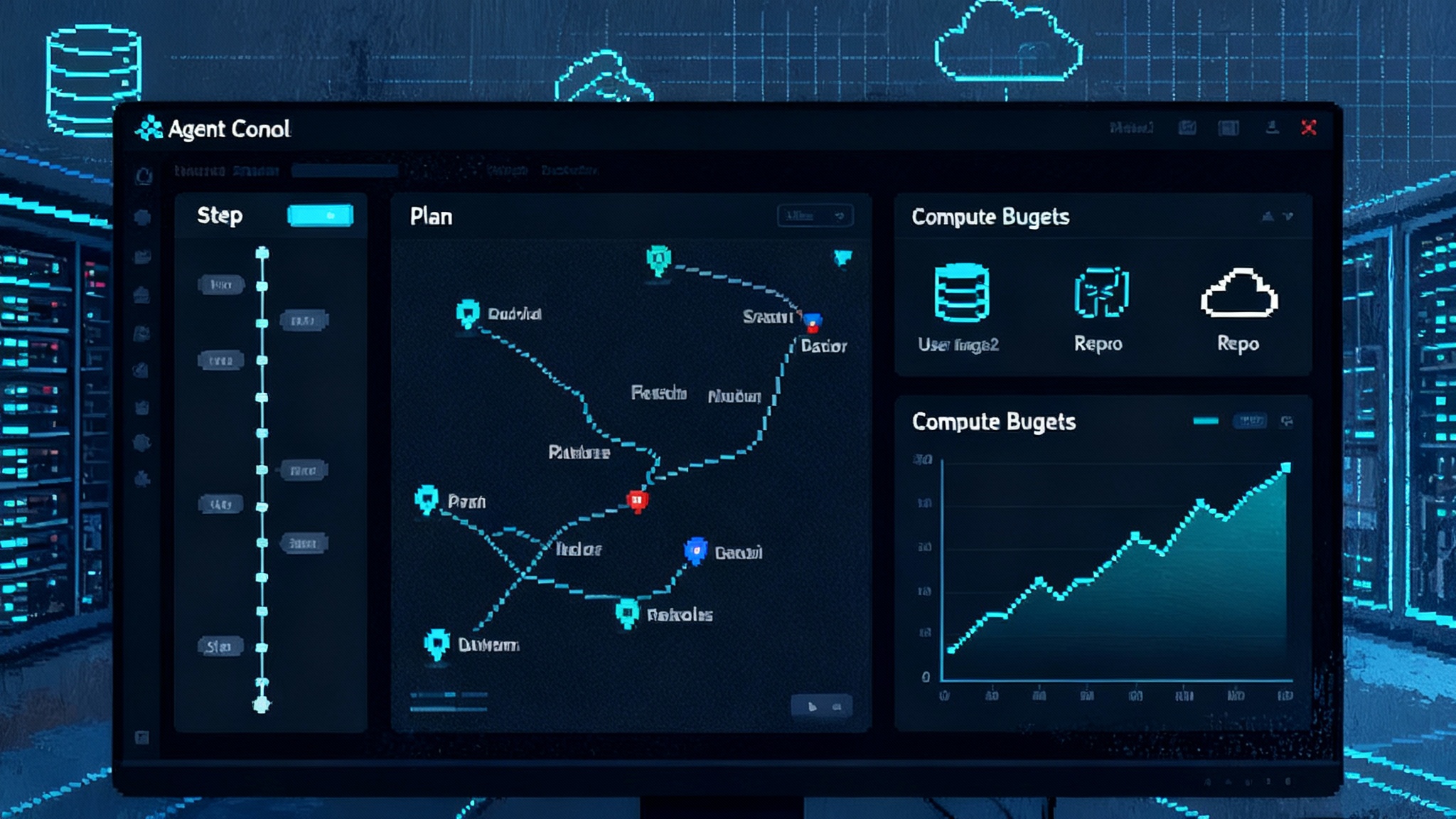OpenFrame's stealth launch rewires MSP ops with agents
Flamingo’s OpenFrame arrives with a bold promise for MSPs: replace costly RMM and PSA bundles with a self hosted, agent first stack that lifts margins, tightens control, and makes automation auditable.

A quiet launch with loud implications
In late October, Flamingo stepped out of stealth with OpenFrame, a self hosted, agent first platform aimed at managed service providers. The pitch is deliberately provocative: replace vendor locked remote monitoring and management and professional services automation suites with an open, composable stack animated by autonomous agents. The company says the result should be better economics and tighter control, not the usual margin compression that follows another tool subscription. Those claims were sketched in the announcement, which also introduced the platform’s two named agents and a self hosted option. If you want the baseline, start with the OpenFrame press release.
This is not another chat widget on top of a ticket queue. It is a design that treats automation as the primary operator, with humans approving sensitive actions and shaping policy. If the model holds up, OpenFrame may be one of the clearest signals that artificial intelligence is finally eating the drudgery at the core of IT operations.
Why the MSP bundle squeezes margins
For two decades, the MSP toolbelt has revolved around two categories:
- RMM suites that watch endpoints, push patches, and provide remote control.
- PSA suites that handle tickets, time, billing, and workflow.
Vendors often offer both, and once you choose a bundle you inherit its pricing, data model, and roadmap. The bundle persists because integration is painful and alternatives are scattered. That stickiness is expensive. Vendor fees consume a large share of revenue, and many tasks still land on a technician’s plate: password resets, low disk alerts, routine patch failures, onboarding and offboarding, license changes, stale agents, and the constant chaff of false positives. The net effect is a margin squeeze. A 10 percent net is not unusual once seats, tools, and salaries settle. OpenFrame targets that reality and proposes a different path.
What OpenFrame actually is
OpenFrame is an AI native operations layer that you can self host or consume as a managed service. Two agents sit at the center:
- Fae focuses on client side tasks such as password resets, disk remediation, and patch health.
- Mingo handles deeper MSP operations such as threat triage and scheduled maintenance.
Instead of waiting for humans to click through queues, these agents act, then record exactly what they did.
A simple scenario illustrates the difference. A low disk alert appears on a laptop. In the traditional flow, the alert opens a ticket, a technician checks the machine, clears temp folders, rotates logs, and writes the notes. In the OpenFrame flow, the agent inspects files, compares the pattern with prior incidents, runs a safe cleanup plan, attaches before and after metrics, and closes the loop. If cleanup would touch a user folder or a critical service, it pauses and requests technician approval in the same interface. The goal is the same outcome with fewer human minutes and better documentation.
OpenFrame also champions a composable spine. Instead of a proprietary bundle, you use open components and published interfaces. In practice that means you can swap in a different telemetry source, use a preferred patching engine, route logs to your chosen SIEM, and still let agents orchestrate the work. If you own more of the stack, the vendor cannot tax every seat.
Controlled autonomy that works in production
Autonomy without control is a demo. The interesting part is how OpenFrame approaches guardrails. Operators define action classes that map to risk levels:
- Read only is always allowed.
- Low risk write actions, such as clearing a cache, can run automatically and log the change.
- Medium risk actions, such as uninstalling a driver or modifying a registry key, require approval from a named human or a role based quorum.
- High risk actions, such as disabling endpoint protection or changing a domain policy, are blocked except inside a change window with a runbook attached.
Each action request includes a plan with step by step commands, preflight checks, and rollbacks. Approvers do not just see a summary. They see the script and the validation probes the agent intends to run. This is what production control looks like: visibility, reproducibility, and a machine readable audit trail. If you are thinking about compliance, you can imagine mapping these logs directly to controls for standards like SOC 2 or ISO 27001.
There is also the question of identity. In a controlled autonomy model, agents must have the fewest permissions possible, scoped to the resource and time window. Token issuance and rotation should be automatic. Secrets belong in a vault, not in text files on an admin laptop. Policies should be code, versioned, and peer reviewed. When an agent misbehaves, you need a kill switch that revokes credentials and halts new runs.
How open components change the cost curve
The bundle persists because it simplifies integration and support. OpenFrame argues that modern open tools, glued by a consistent data model and a couple of well trained agents, can deliver the same reliability at lower unit costs. Consider what an open spine often includes today:
- Endpoint management and inventory through a lightweight agent paired with an open database.
- Fleet data and query orchestration via osquery derivatives or equivalent.
- Remote access via a self hosted broker or a replaceable cloud relay.
- Log capture into your chosen store, either a free tier of a managed service or an open search stack.
- Ticketing that is self hosted or integrated via clean APIs, with the agent running the workflow.
None of those components alone is new. The shift is what happens when an agent can see across them and act. Vendor lock in weakens when the automation layer is independent and the integrations are published. If your remote access cost rises, you swap it out and the agent keeps doing the same job. If log volume spikes, you move to object storage and a different indexer. Open components change what you pay for and who controls the roadmap.
Can the math really flip margins
Let’s put numbers to it. Imagine an MSP that manages 1,000 endpoints across 40 clients.
- In a traditional bundle, vendor tools might cost 15 to 35 dollars per endpoint per month when you add RMM, remote control, antivirus, and add ons. Take the midpoint at 25 dollars. That is 25,000 dollars monthly.
- Labor is next. Say you staff five technicians at a fully loaded 9,000 dollars each per month, or 45,000 dollars.
- Revenue at a blended 75 dollars per endpoint would be 75,000 dollars.
Once you add overhead, little room for margin remains.
Now shift to a self hosted open stack where software costs drop to low single digits per endpoint for hosting and support. Call it 5 dollars per endpoint, or 5,000 dollars monthly. Let agent automation remove 40 percent of repetitive tickets. You reallocate time to higher value work and reduce overtime, bringing effective labor down to four technicians, or 36,000 dollars. With revenue held constant, your operating surplus moves above 30 percent. If automation improves and you widen service tiers, you can approach the 40 to 50 percent range. Flamingo has framed the upside even more aggressively in public comments, but the conservative math is already attractive.
Two caveats matter. First, you do not get that benefit unless the open stack is stable and observed, which takes engineering discipline. Second, agents must be trustworthy and governed, or the savings vanish in rollback work and client churn. Autonomy only pays when it is paired with accountability.
Security, risk, and the real world
RMM tools are prime targets because they are powerful and ubiquitous. The Kaseya VSA supply chain ransomware event in 2021 still casts a long shadow. The lesson is not that self hosting is always better or worse. The lesson is that concentration of control without strong controls is dangerous. If you centralize power, centralize oversight and response. For a refresher on the incident and official guidance, see the CISA and FBI Kaseya guidance.
With an agent first model, risk moves and splits. You operate more of the stack, which increases patching and monitoring responsibility, but you also reduce exposure to single vendor outages or price shocks. The agents introduce a new class of risk. Prompt injection, tool misuse, and model drift are operational hazards, not theory. Here is how to implement controlled autonomy to manage those hazards:
- Treat agents as privileged identities. Issue scoped tokens with strict time to live, store secrets in a vault, log every call and response, and rotate keys automatically.
- Make policies executable. Use allow and deny lists for tools and commands. Encode preflight and postflight checks in the policy itself. Approvals should reference exact code, not a summary.
- Create a safe test cell. Every new action runs first on disposable endpoints that mirror production. Only then can the agent propose the action for limited rollout.
- Watch for jailbreaks. Enforce content filters on inbound data sources, strip risky inputs such as web content that could instruct the agent to run commands, and apply robust escaping to any generated script.
- Build a kill switch. One button should revoke credentials, stop workflows, and block new agent proposals. Run a quarterly exercise to be sure it works.
If you adopt a self hosted option, split control planes by client, keep the management plane off the open internet behind a zero trust gateway, and standardize on immutable server images for upgrades. A platform like this succeeds when the boring parts are mature.
A 90 day proof plan for MSP leaders
You do not need to gamble the business to evaluate OpenFrame or any agent first approach. Use this phased plan to measure impact:
- Days 1 to 10: Build a sandbox in a separate tenant or virtual network. Load a small client dataset, import common device types, and connect read only integrations. Establish logging to your existing security stack.
- Days 11 to 20: Choose three high volume, low risk tickets across your book of business. Password resets, low disk cleanup, and failed patch retries are common. Map the actions, define preflight checks, write rollbacks, and set approval rules.
- Days 21 to 30: Enable autonomy for those three tasks on a canary group of 50 endpoints. Require approvals for any operation that touches user data or security controls. Track success rates, rework, and time saved.
- Days 31 to 45: Add two medium risk actions such as printer driver clean reinstall or brownout detection and throttling on virtual desktops. Expand canaries to 150 endpoints. Start capturing client satisfaction signals tied to automated resolutions.
- Days 46 to 60: Shift from per endpoint metrics to per ticket class metrics. Compare agent time to technician time, look at avoided escalations, and calculate cost per resolved ticket. Build a margin model for broader rollout.
- Days 61 to 75: Integrate approvals into change windows. Only allow high risk actions inside those windows. Add a daily operator stand up with a five minute review of agent proposals and outcomes.
- Days 76 to 90: Graduate the initial automations to broad rollout. Freeze new automations for two weeks and focus on stability. During the freeze, write a playbook for client communications and billing updates that reflect faster resolution.
At the end of 90 days, you will know if controlled autonomy reduces labor on your most common tickets and whether your data model is mature enough for day to day operations.
Where this fits in the broader agent shift
OpenFrame does not exist in a vacuum. Across the stack, we are watching a pattern emerge: production ready agents plus open, replaceable primitives. On our pages, you can see the same trajectory in Manus 1.5 goes production and in how governance is getting productized in governed autonomy ships to teams. On the builder side, the factory metaphor is taking shape in Caffeine's autonomous app factory. Read those alongside this piece and you will see the same bones: tools that act, guardrails that keep them honest, and interfaces that let operators steer.
The memory layer is another subplot that will matter for MSPs. As agents take on more work, persistent context reduces misfires and shortens runbooks. If you are exploring that frontier, keep an eye on the teams treating memory as a first class primitive and exposing it cleanly to policies and audit.
What could still break and how to prepare
Agent first operations are not magic. Here are the failure modes most likely to bite and how to blunt them:
- Model confusion: Agents can misread context. Narrow, typed tool interfaces and explicit prechecks are essential. Avoid free text commands whenever possible.
- Quiet failure: Partial success can mask risk. Instrument every step, fail loudly on missing telemetry, and keep state machines simple so rollbacks trigger predictably.
- Integration churn: Open components change. Pin versions, test upgrades in the safe cell, and budget time for dependency work. Do not chase every new release.
- Client trust: Automation that touches user systems is sensitive. Share weekly activity reports that show what changed, who approved it, and how you would undo it.
- Organizational drift: As autonomy rises, roles shift. Upskill technicians into automation maintainers and client advisors. Align incentives to reward stability, not ticket volume.
The early read on what changes next
OpenFrame is a strong signal that the center of gravity in IT operations is shifting from bundles to building blocks, and from dashboards to agents that do real work. The novelty is not that operations can be automated. The novelty is that an agent first model paired with open components makes it practical to swap parts, keep control of data, and change the economics of service delivery.
If you run an MSP, the choice is no longer between efficiency and control. You can take more control of your stack and buy back technician time at the same time, provided you treat autonomy as a governed capability. The next year will reveal how far this model can go, but one thing is clear. The service providers that learn to pair agents with open, replaceable infrastructure will set the pace. Those who wait for a vendor to bundle it neatly may find the value captured somewhere else.
That is the breakthrough hiding in a quiet launch. Autonomy, when it is controlled and paired with open components, can turn a thin margin operations business into a resilient, software shaped one. The interesting work begins when you decide which repetitive task your agents will retire first.








